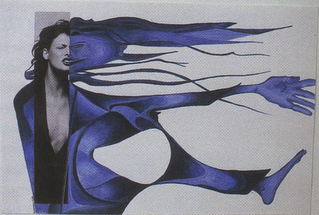Intro to Drawing and Painting
The last work of art we formally critiqued was much more complicated than the one below by Pablo Picasso (Blue Period). I would like you to find the name and year this painting was created and then complete a formal critique.
This is due on November 11th.
STEPS:
1. Describe what you see. This is the objective
(not subjective or personal) portion of the Art Critique. (Objective information or analysis is fact-based where as Subjective information is based
on personal opinions, interpretations, points of view, emotions & judgment)
Objective Information involves a technical description-nothing more. It should include things
like:
ü Artist's name.
ü Title of work.
ü Type of artwork.
ü Subject of the painting (scene).
ü Objects in the painting.
ü First impression. Note the characteristics of the artwork
that first jump out at you.
ü Colors used.
ü Shapes, lines and texture.
ü Light saturation.
ü Sensory qualities. Identify the predominant mood and visual
effect.
2. Analyze the Artwork. Evolve the art criticism from a technical description to
an in-depth examination of how the technical elements were utilized by the
artist to create the overall impression conveyed by the Artwork. Technical
elements you need to analyze when you critique artwork include:
ü Lines, Shapes, Color, Space & Texture.
ü Light and Shadow.
ü How each technical element contributes to the mood, meaning
and aesthetics of the Artwork.
3. Interpret the Artwork. This
part of an Art Critique is more subjective (personal-see definition above) than
the others, as you are expected to use your analysis of the technical aspects
of the piece of Art to apply your own idea to the artist's intended purpose for
the Artwork. Try to accomplish the following things when formulating your
interpretation:
ü Describe what you think the artist is trying to say through
the work of Art.
ü Expound on the feeling conveyed by
the Artwork. Describe what the Artwork means to you, and why.
ü Explain what you feel is the
artist's intended purpose for creating that particular work of Art. Examine why
the artist made the choices in technique, materials and subject matter and how
they relate to the intended purpose.
ü Identify symbols in the artwork and
describe how they relate to the artist's technical choices and contribute to
the artist's execution of the intended purpose.
4. Evaluate the Artwork. This is
a summary of the Art criticism process leading up to this point. Use your
analysis and interpretation to draw conclusions and reach judgments about the
artwork.
ü State what you think the Artwork's
value is. For example, its value may be to evoke nostalgia, to incite anger or
to impart beauty. Explain why you feel this way.
ü Describe the Artwork's relevance to the Art Community and to
people as a whole.
ü Explain where you feel the Artwork has strong value and
where you think it falls short.
Remember, your goal is not to say whether or not the
Artwork is “good”, but rather to describe the essence of the work by analyzing
the Elements and Principles of Design and the artists intention with the
information in front of you.











